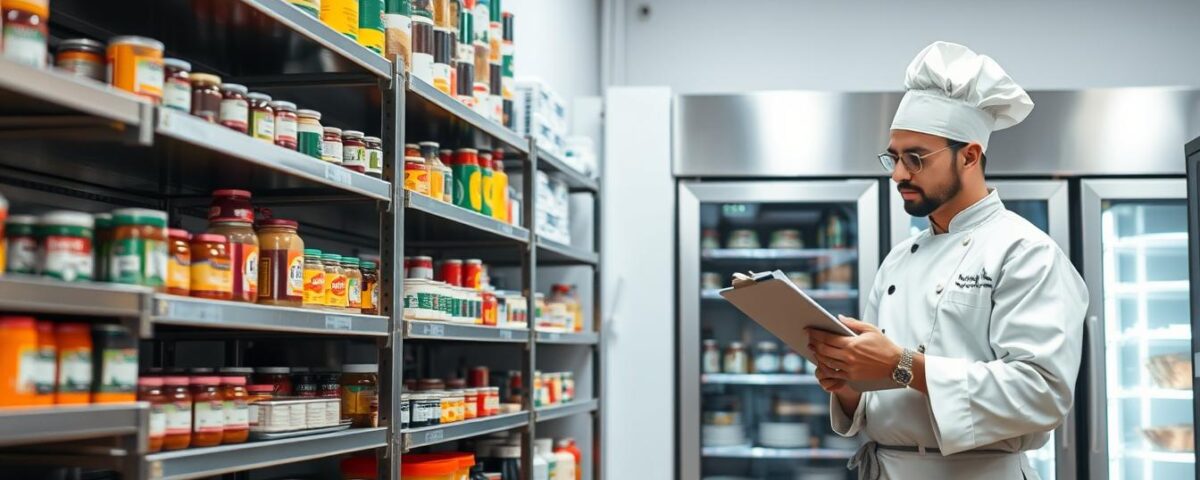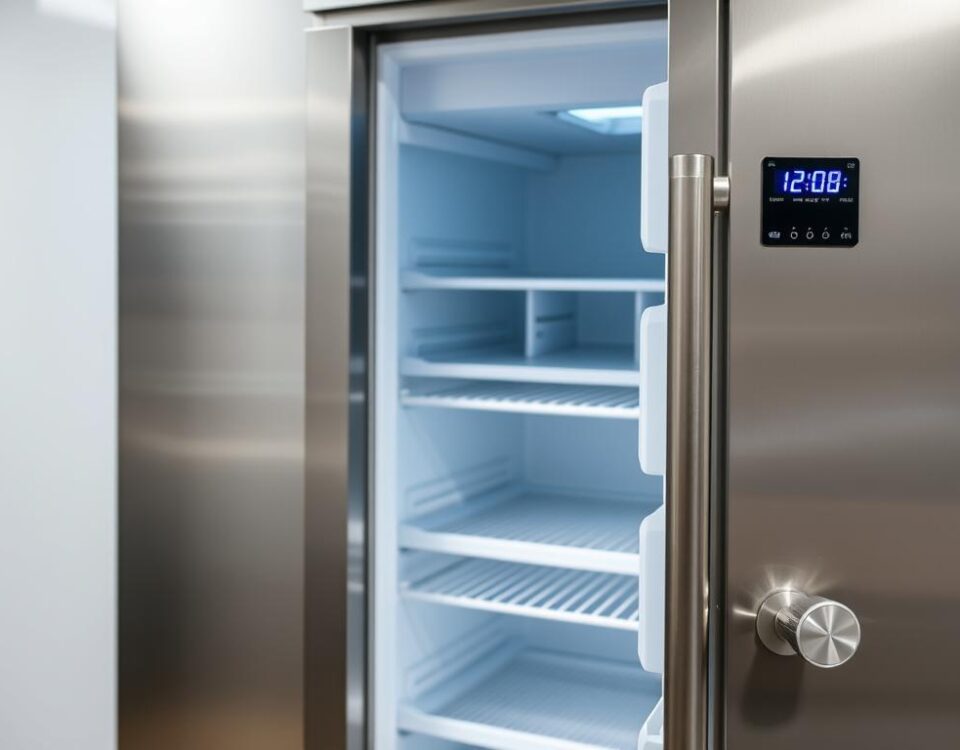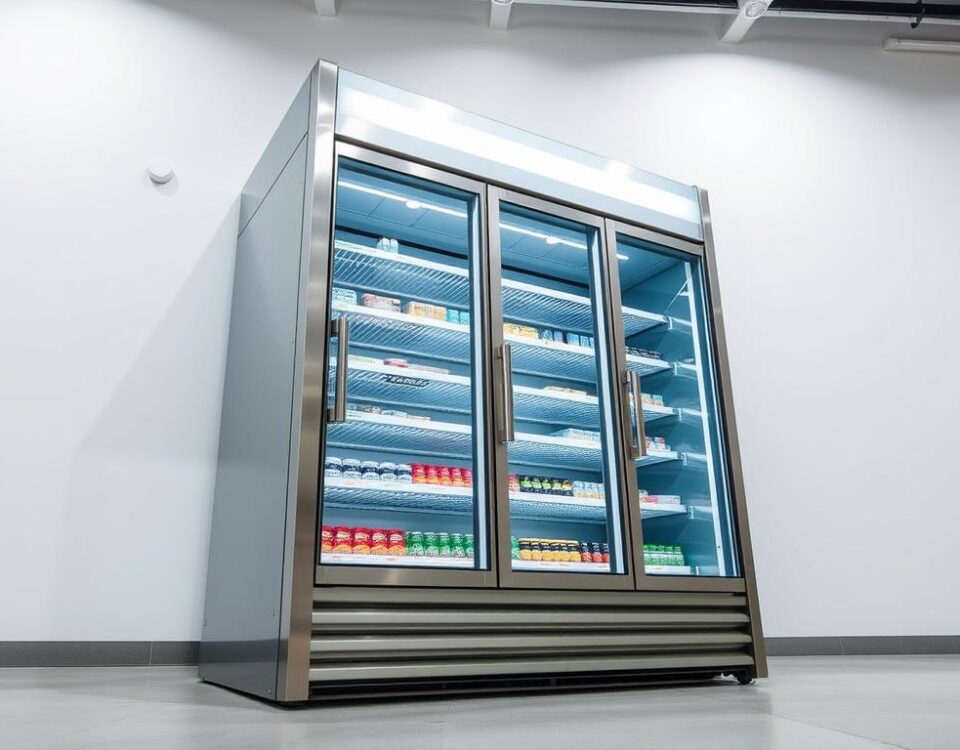
The Ultimate Commercial Kitchen Cleaning Checklist to Pass Every Inspection
July 3, 2025
How the Busiest Restaurants Keep Tables Full Every Night with Smart Strategies
July 4, 2025As a restaurant owner, managing inventory effectively is crucial to maintaining profitability. I recall a client who was losing thousands monthly due to inefficient inventory management practices. It’s a common issue; studies show that restaurants can lose up to 10% of their annual food sales due to poor inventory control.
This staggering statistic highlights the urgent need for effective inventory strategies. By implementing the right inventory hacks, restaurants can not only cut costs but also enhance overall business efficiency. In this article, I’ll share six practical tips that can be implemented immediately to transform your restaurant’s profitability.
Key Takeaways
- Effective inventory management can save restaurants thousands monthly.
- Poor inventory practices can lead to significant financial losses.
- Implementing inventory hacks improves business efficiency.
- Simple strategies can be applied without expensive software.
- Proper inventory management affects food costs and service quality.
The Hidden Cost of Poor Inventory Management
Poor inventory management is a silent killer for restaurants, draining thousands from their bottom line each month. Restaurants lose up to 10% of their annual food sales due to poor inventory management practices, a staggering figure considering the tight margins in the restaurant industry.
Why Restaurants Lose Up to 10% of Annual Food Sales
Restaurants lose a significant portion of their sales through various channels, including spoilage, over-ordering, theft, and improper portioning. For instance, when inventory is not properly tracked, restaurants may end up ordering more stock than they need, leading to waste and unnecessary costs.
The Impact on Your Bottom Line
The compounding effect of poor inventory management can be devastating. Small daily waste adds up to thousands in lost revenue monthly, affecting not just the bottom line but also staff morale and customer satisfaction. By implementing proper inventory controls, restaurants can transform their profitability and improve their overall business performance.
Effective inventory management is crucial for making informed decisions and driving business growth. By leveraging data and implementing strategic inventory practices, restaurants can minimize waste, optimize their costs, and enhance their staff’s efficiency.
Hack #1: Focus on Your Top 5 Cost Items

By focusing on the top 5 cost items in your restaurant inventory, you can significantly reduce unnecessary expenses. This approach allows you to deliver 80% of the inventory management benefits with just 20% of the effort, making it perfect for busy restaurant operators.
Identifying Your Highest Cost Ingredients
If you’re tracking your COGS (Cost of Goods Sold) with a restaurant management system (RMS) or on a spreadsheet, determining your top 5 highest cost items should be relatively straightforward. Start by examining your proteins and other high-cost perishables, as these often represent the largest expenses.
The Quick Count Method Before Ordering
Each time you place an order for your top 5 products, take a quick on-hand count using your phone’s notes app, a clipboard, or an old expo ticket. This simple “Quick Count Method” helps prevent over-ordering by giving you a real-time snapshot of your current inventory levels.
How This Simple Hack Prevents Over-Ordering
By closely monitoring your top 5 cost items, you can avoid the common pitfall of over-ordering high-cost products, which is a significant drain on restaurant profitability. This focused approach enables you to make smarter purchasing decisions and reduce waste, ultimately saving your restaurant thousands every month.
Hack #2: Implement Strategic Inventory Frequency
The traditional monthly inventory count is no longer sufficient for modern restaurant management. Restaurants deal with highly perishable items, usually ordered on very short cycles, making weekly or at least monthly inventory an ideal best practice.
Moving Beyond Monthly Counts
Most businesses can get by with quarterly inventories, but restaurants require a more frequent approach. Scheduling monthly inventories is a good starting point, and then adding partial inventories of key ingredients weekly can help build the habit.
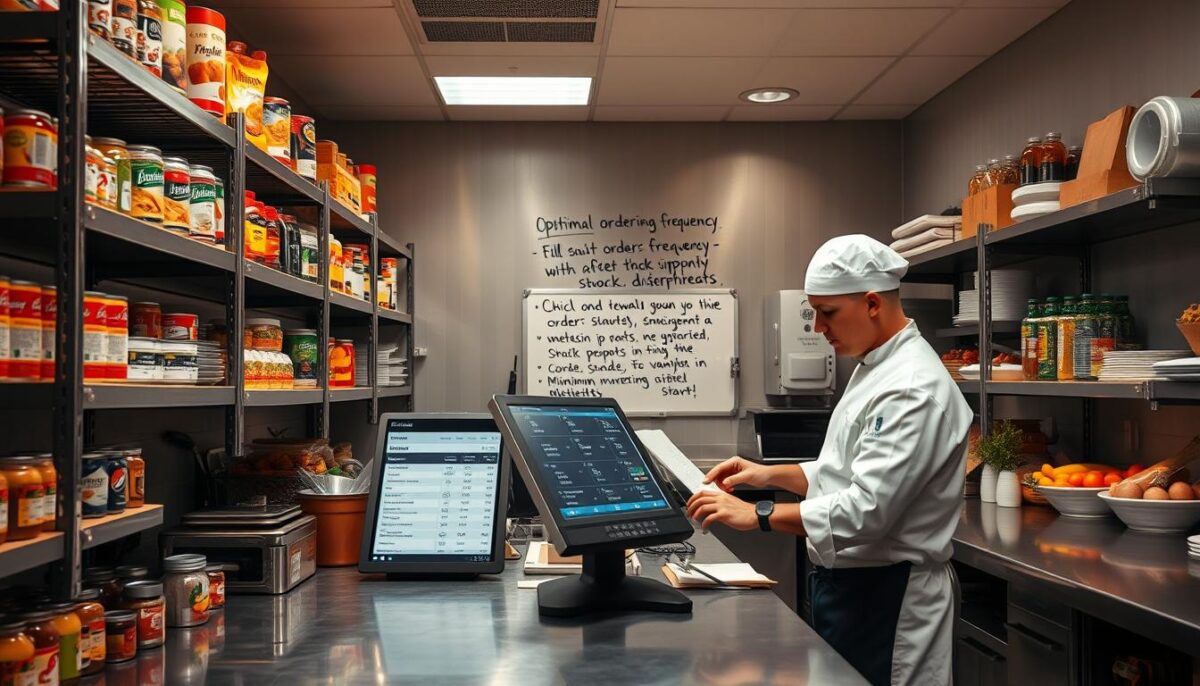
The Power of Partial Weekly Inventories
By implementing partial weekly inventories of high-cost or highly perishable items, restaurants can dramatically reduce waste while requiring minimal time investment from the team. This approach helps in creating a sustainable inventory schedule that works with the restaurant’s unique operational rhythm and staff availability.
Creating a Sustainable Inventory Schedule
To make weekly partial inventories manageable, restaurants can adopt time-saving techniques. By starting small and demonstrating the immediate benefits, the inventory habit can be gradually built among staff. Delegating inventory responsibilities across the team prevents burnout and ensures consistency, making inventory management a natural part of the restaurant’s operation rather than a dreaded monthly chore.
Hack #3: Master Shelf-Life Management
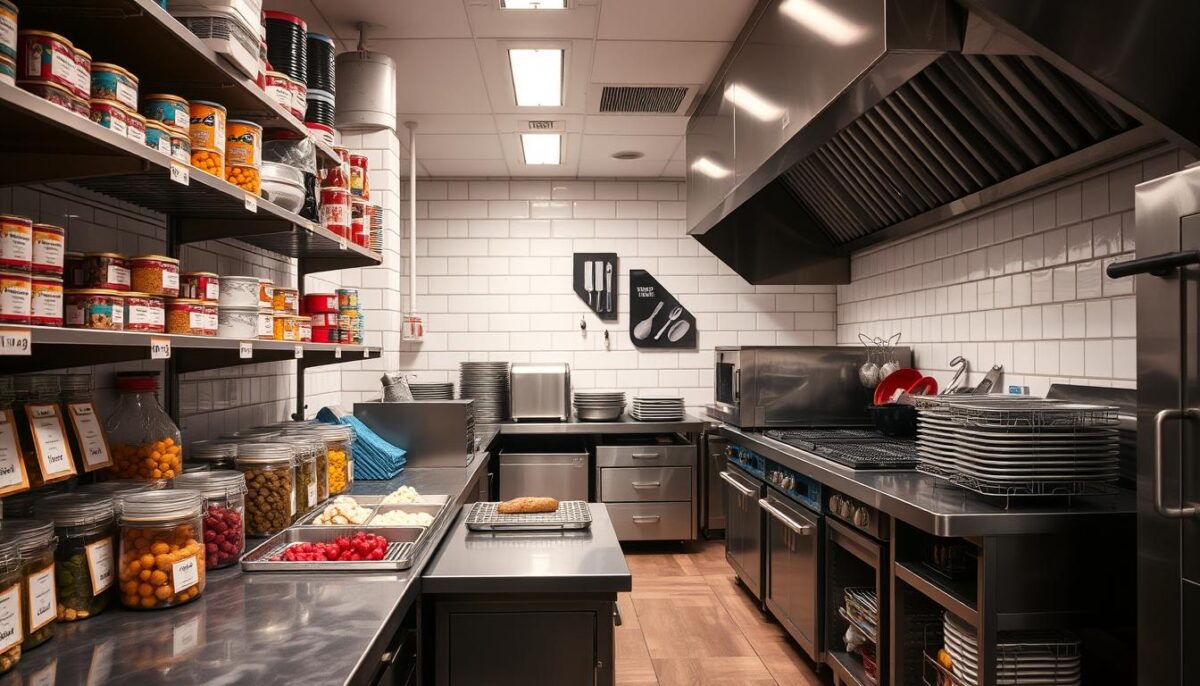
Restaurants that master shelf-life management can turn a potential liability into a competitive advantage. Managing the shelf-life of ingredients is a critical aspect often overlooked in restaurant inventory management. Ignoring this can lead to using expired products or unnecessary waste, impacting both food quality and cost-efficiency.
Implementing FIFO
Establishing a First-In, First-Out (FIFO) system ensures older stock is used first, minimizing spoilage. To implement FIFO effectively, it’s crucial to train staff on the importance of rotating stock and using the oldest items before they expire.
Creating an Effective Waste Log
Maintaining a waste log is more than just record-keeping; it’s an analytical tool that reveals patterns and opportunities for menu engineering and cost control. By tracking waste, restaurants can identify areas for improvement and make data-driven decisions.
Turning Expiration Dates into Profit Opportunities
Creative strategies can turn near-expiration ingredients into profitable specials, staff meals, or prep items rather than throwing them away. This approach not only reduces waste but also adds value to the menu and enhances customer experience.
By mastering shelf-life management, restaurants can reduce food costs by 2-5% without changing their menu or suppliers. This is achieved through a combination of effective FIFO implementation, waste log analysis, and creative menu planning.
Hack #4: Track Theoretical vs. Actual Usage

One of the most powerful tools in restaurant inventory management is tracking theoretical versus actual usage. This comparison is crucial for identifying hidden inventory issues that can significantly impact your bottom line.
The Formula That Reveals Hidden Issues
To calculate theoretical vs actual usage, you need to start with your beginning and ending inventory for a specific period. Then, factor in any purchases made during that time. The formula is straightforward: starting inventory + purchases – ending inventory = actual usage. If this number doesn’t align with your sales data, there’s an inventory management issue that needs attention.
Identifying Variances in Your Key Products
Theoretical usage is calculated based on sales data and recipe specifications. By comparing this to your actual usage, you can identify variances in your key products. Common causes of these discrepancies include portion inconsistency, waste, theft, and recipe compliance issues.
Taking Action on Usage Discrepancies
To address variances, implement a systematic approach. Start by investigating the causes of discrepancies in your high-cost items. Take corrective actions such as retraining staff, adjusting recipes, or improving inventory tracking. By regularly monitoring theoretical versus actual usage, you can enhance your inventory management and directly impact your COGS.
Hack #5: Leverage Mobile Technology for Inventory Management

The days of tedious inventory counts are over, thanks to mobile technology. Traditional clipboard and spreadsheet methods are not only time-consuming but also prone to errors. Mobile inventory management apps have transformed this process, making it quicker, more accurate, and more efficient.
Moving Beyond Clipboards and Spreadsheets
Clipboards and spreadsheets have been the backbone of inventory management for years. However, they come with significant drawbacks, including time waste, data entry errors, and delayed insights. Mobile technology eliminates these issues, enabling restaurants to manage their inventory more effectively.
How Mobile Inventory Cuts Count Time in Half
Modern mobile inventory apps can cut count time in half while improving accuracy. Features like barcode scanning and voice input make the process faster and more efficient. This means that restaurant staff can focus on more critical tasks, such as customer service and food preparation.
Connecting Inventory Directly to Ordering
One of the most significant advantages of mobile inventory management is the ability to connect inventory directly to the ordering system. This eliminates double-entry and ensures that restaurants order exactly what they need. By streamlining this process, restaurants can reduce waste, lower costs, and improve their bottom line.
By leveraging mobile technology, restaurants can gain real-time insights into their inventory, enabling more agile decision-making about menu specials, purchasing, and waste reduction. This is a game-changer for the industry, and it’s essential for restaurants to adopt this technology to stay competitive.
Hack #6: Transform Your Restaurant’s Profitability Through Smarter Inventory
Smarter inventory management isn’t just about cutting costs; it’s about creating a more efficient, profitable restaurant business. By implementing the six inventory hacks outlined, you can transform your restaurant’s profitability. These hacks create a virtuous cycle: better data leads to better decisions, resulting in improved profitability and resources for further enhancements. Restaurants that have adopted these practices have seen significant financial gains, including a reduction in food costs. To start your journey, focus on quick wins and build towards more comprehensive systems.
Begin your transformation today by leveraging these inventory hacks to create a more intentional, data-driven approach to your restaurant operations.
FAQ
How often should I take stock of my food supplies?
I recommend implementing a strategic inventory frequency that goes beyond monthly counts. Consider partial weekly inventories to stay on top of your stock levels and adjust your ordering accordingly.
What’s the best way to manage the shelf-life of my products?
To maximize profitability, I use the FIFO (First-In, First-Out) method to ensure that older items are sold or used before they expire. I also maintain a waste log to track expired products and identify opportunities to reduce waste.
How can I identify discrepancies in my inventory usage?
By tracking theoretical vs. actual usage, I can pinpoint variances in my key products and take corrective action to address issues such as theft, over-portioning, or menu engineering problems.
Can mobile technology really make a difference in managing my stock?
Yes, leveraging mobile inventory management tools has significantly streamlined my inventory process, cutting count time in half and enabling me to connect my inventory directly to ordering, thus reducing errors and improving efficiency.
How can I reduce my food costs and minimize waste?
By focusing on my top 5 cost items and using the quick count method before ordering, I can prevent over-ordering and reduce waste. I also use sales data to inform my ordering decisions and adjust my menu engineering accordingly.
What’s the impact of poor inventory management on my bottom line?
Poor management can lead to significant losses, with restaurants potentially losing up to 10% of their annual food sales due to waste, theft, and over-ordering. Effective inventory management is crucial to maintaining profitability.
